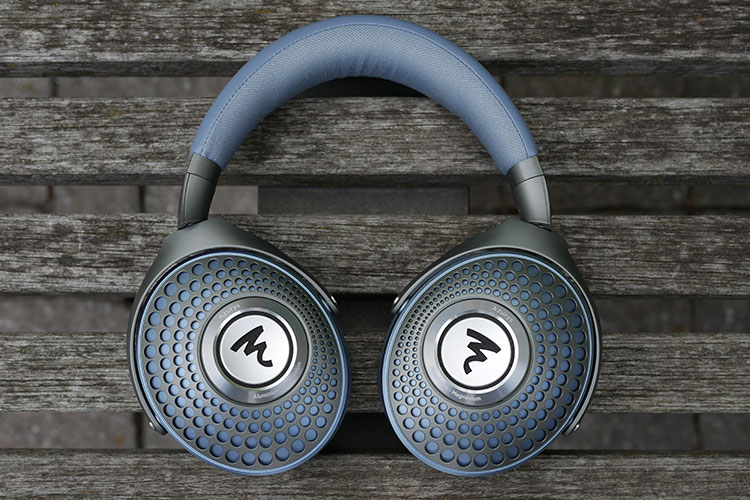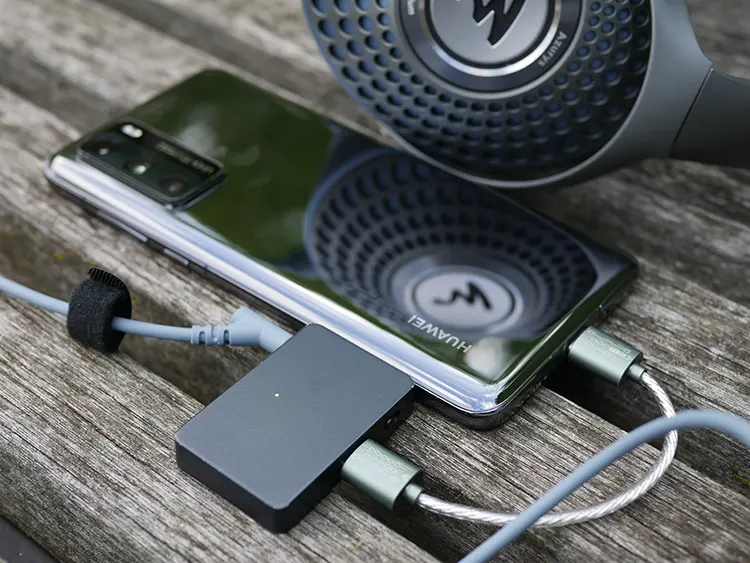Sound Impressions
Summary
As the most affordable model in Focal’s lineup, the Azurys has a well-rounded signature that balances all frequencies quite well, with modest upticks to the bass and treble.
The result is a mild V-shaped signature that should have wide appeal, perfectly suitable for their place in Focal’s lineup.
The low end is warm and punchy and does a good job of balancing sub- and mid-bass regions so neither is overpowering. While elevated, I feel Focal did a good job reining in the low-end quantity, leaving it so users can easily tailor it via EQ to suit their preferences.
While the extension is good and the Azurys has plenty of energy up top, it does smoothly roll off keeping it from fatiguing the listener. There is some upper mid glare though, so keep that in mind when listening to tracks with a hot mid-range mastering.
Detail levels are good from top to bottom, but not outstanding. I find it works best in the role of the daily driver instead of being used for monitoring or other situations where plenty of detail and technical prowess are desired.
Bass
Being a closed-back headphone, it is no surprise that the Azurys has a boosted low end. Bass extends well into sub-bass regions giving the presentation decent visceral feedback, but far from the point where it will rattle your brains and loosen your fillings.
The mid-bass presentation is warm and punchy and notes attack with a solid smack. Decay is natural, meaning it’s not overly quick.
On extremely congested tracks notes will smear slightly, but otherwise, the Azurys sounds just right when dealing with rapid, bassy transitions. Focal’s 40mm dynamic remains tight and clean in most instances and is a good performer.
Texturing and detail are fine, but they’re not the main attraction. A little more grunge and grit with my EDM, Metal, and Hip Hop is preferred, but the Azurys’ presentation is satisfying for most genres.
Mids
Azurys’ handling of the mid-range is done well, sitting just behind the other frequencies in terms of emphasis. It’s not overshadowed but doesn’t stick out either.
An upper mid bump keeps vocals and instruments in the mix, and results in a snappy attack on percussive and rhythm instruments. Saxophones are a highlight and presented beautifully through the Azurys, so I sought tracks from two of my favorite bands, King Crimson and Supertramp, to test them out.
This bump also has the effect of adding glare to some vocal performances. As such, tracks or albums with a hotly mastered mid-range can become unpleasant through the Azurys, particularly at high volumes.
Detail and clarity are also good but not outstanding in the midrange, with finer details lacking prominence. What should be sharp and precise has a soft edge that leaves me swapping to a different headphone when I want to listen critically.
Treble
In the treble region, the Azurys provide a satisfying, non-fatiguing listen. Extension is good with a smooth roll-off.
There is enough shimmer and sparkle to ensure tracks retain their energy, but it’s not overdone and never oversteps into being overly aggressive. Notes are tight and well-controlled, free of the splash or slop that can easily ruin an otherwise perfectly good headphone.
Detail and clarity are again where the Azurys are fine but never outstanding. Minor details are there, but you must listen intently for them as they’re easily overlooked on busy tracks.
This presentation works in the context of the Azurys as a daily driver, but if you want an outstanding technical performance, you might be disappointed.
Staging & Dynamics
Closed-back headphones aren’t known for having a spacious soundstage, though there are exceptions, like the AKG K553 Pro. The Azurys is no exception and has a compact stage in line with competing headphones with this form factor.
Width is minimal with the default vocal positioning sitting just outside the ear, about where I’d expect the driver to be. From there, sounds can move in plenty close to give an intimate experience, but any distance beyond the ear is restricted.
I also found the staging closed in further as the volume increased. Those who listen especially loud might find the Azurys constrictive, but low-volume listeners shouldn’t find this a problem.
Thankfully, the Azurys’ technical qualities make up for the moderate staging. Channel-to-channel movements are clear and precise, though a hint vague or just off-center.
Instrument separation is quite good, particularly at lower volumes, and I didn’t have issues picking out and following specific instruments, except at extreme volumes and overly congested tracks.
The Azurys also layered track elements well, giving the moderately sized stage a convincing depth that enabled me to immerse myself in the music.
Synergy
Efficiency
An easy-to-drive headphone usually has the specifications to suggest this, which is the case with the Azurys. It has a sensitivity of 100 dB and an impedance of 26Ω.
I had no problems bringing it up to comfortable listening levels and beyond from any source, including the headphone jack of a Motorola Moto G Play 2023. This and other sources didn’t incite hiss or other negative qualities either.
Unlike the Hadenys, the Azurys don’t lose dynamics and energy at lower volume levels. As such, it was just as pleasant a listen at near minimum volumes as at much higher levels.
Pairings
The ddHiFi TC35Pro (Eye) is a versatile dongle with a small footprint, plenty of power, a black background, and a neutral-leaning sound with some added warmth. These qualities make it an ideal pairing with the Azurys.
Paired with my Huawei P40, it can drive the Azurys to dangerously high volumes without distortion. Compared to the next two products, I found that the TC35 Pro (Eye) brought additional energy to the lower treble making the Azurys a bit livelier.
While the Earstudio HUD100 is a favorite of mine, its analog signature is a detriment with the Azurys, even in its Bypass mode which reduces that quality. Through the HUD100 a wide range of volumes are possible, but the treble presentation is softer and less precise, as are the mids.
While the Azurys provides a good amount of detail, it is far from a class leader in this regard, and through the HUD100 this quality is reduced. The result sounds fine, but the lack of standout qualities is underwhelming.
Enter the EarMen TR-Amp, which falls between the TC35 Pro (Eye) and HUD100 in its use of the Azurys. It brings less energy to the table than the ddHiFi but steps up the detail levels and texturing across the board, especially compared to the HUD100.
It also provides the smoothest, most refined sound of the three which works well with the Azurys since the upper mids can be a hint edgy. The TR-Amp helps to soften this but also balances the Azurys’ signature by taming some of the mid-bass giving the sub-bass more presence.
None of these devices are necessary with the Azurys since it’s so easy to drive, but you can get better performance from it with a good amp or source, even if the effects are minimal at best.




